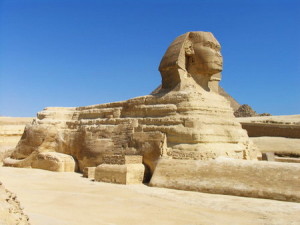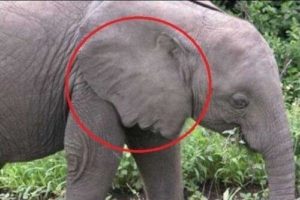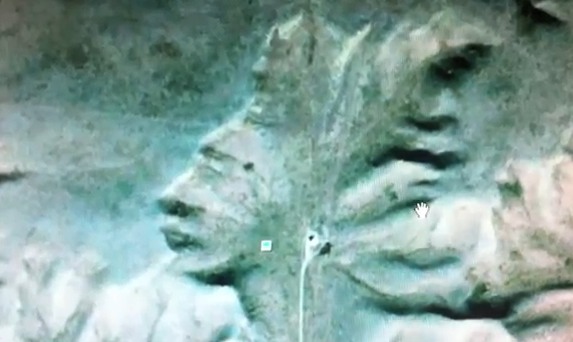Pareidolia
Martinez Concha, Santiago
 Santiago Martínez Concha is a Colombian author who published in March 2012 an English Kindle version of his Spanish language book with the title The Discovery of Atlantis [2055].>He has published over a dozen other books, also in Spanish(a), including a series, CODEX, which deals with the antediluvian world.<
Santiago Martínez Concha is a Colombian author who published in March 2012 an English Kindle version of his Spanish language book with the title The Discovery of Atlantis [2055].>He has published over a dozen other books, also in Spanish(a), including a series, CODEX, which deals with the antediluvian world.<
‘Discovery’ is poorly translated and includes four, apparently important, checklists all in Spanish! He places Atlantis in the region of the Azores which sits on the Mid-Atlantic Ridge (MAR) and considers all other proposed locations as mere colonies of Atlantis. He refers erroneously to the MAR as a subduction zone, but that is a minor matter compared to his insistence on a connection between Atlantis and features on Mars! He also includes the claim that Atlantis was destroyed by the Earth-Mars Orbital exchange, based on the ideas of creationist Donald Patten (not Alan Patten).
Martinez would also appear to suffer from chronic pareidolia, seeing giant heads in rock outcrops, guardian animals and a view of a queen about to give birth at Machu Picchu. You could not make this up unless you were experimenting with Colombia’s biggest export.
Pareidolia
Pareidolia is the technical term to describe the human tendency to mentally construct familiar images from random visual stimuli, both dynamic and static, such as clouds, fires, mountains, trees, toasted bread, vegetables etc., etc., etc. The links below(a)-(e) give many examples, some funny, some pathetic. The Fortean Times magazine provides regular examples.
Readers will by now be asking what this has to do with Atlantis. Well quite frankly, very little, except that a recent book by the Columbian author, Santiago Martínez Concha, entitled Atlantis devotes a large part of this slender volume to photos of mountains where pareidolic images of heads are claimed to have been carved by ‘giants’ which the author identifies with the nephilim of the Old Testament. The book is available as a free Kindle download(f) and quite frankly it is overpriced at that. [offer no longer available as of April 2014]
Perhaps even more pertinent is the claim by Doug Yurchey that Atlantis had been situated in the Atlantic and connected to twelve colonies by a perfect grid(g), one of which was in Canada and marked by an Indian head! This perceived image is a classic case of pareidolia.
Another example is what is known as ‘The Carpathian Sphinx’ in Romania’s Brucegi Natural Park. A pathetic attempt to construct a serious theory linking this natural rock formation with the Egyptian Sphinx is the subject of a 2014 feature-length YouTube video by filmmaker Oana Ghiocel(h).
A collection of 20 images with a claimed religious significance has been published on the website of The Telegraph website in the UK(i).
(a) https://www.seeker.com/is-that-an-elephant-on-mars-1765727684.html
(b) https://forum.schizophrenia.com/t/pareidolia/8739 (see elephant ear image above)
(c) https://hellaheaven-ana.blogspot.com/2011/06/pareidolia-took-queens-elizabeth-dollar.html
(d) https://web.archive.org/web/20190623012114/https://www.yoism.org/?q=node/129
(e) https://earthsky.org/human-world/seeing-things-that-arent-there
(f) See: https://web.archive.org/web/20130208081014/https://www.amazon.com/ATLANTIS-ebook/dp/B007PKOQNA/
(g) https://www.world-mysteries.com/newgw/doug_atlantis_pg.htm (link broken July 2020)
Sphinx
The Sphinx (at Giza) is considered by many to be considerably older than the usually accepted 3rd millennium BC. Its construction has been generally attributed to the Fourth Dynasty ruler Khafre, circa 2500 BC, whose head is believed to be currently represented on the Sphinx.
The controversial French scholar Rene Schwaller de Lubicz investigated several of Egypt’s ancient monuments.  He was probably the first to remark on the apparent water erosion, on the Sphinx, as evidence of an earlier date for its construction than was previously accepted. He first voiced his views in 1949[449] and expanded his theories in 1957 [450]. His work has now been translated into English(a).
He was probably the first to remark on the apparent water erosion, on the Sphinx, as evidence of an earlier date for its construction than was previously accepted. He first voiced his views in 1949[449] and expanded his theories in 1957 [450]. His work has now been translated into English(a).
Jason Colavito has added that “Schwaller de Lubicz got it from Gaston Maspero, who adopted it from Auguste Mariette, who came up with it because he mistook a Ptolemaic stela for an Old Kingdom one and therefore mistook a myth on the Inventory Stela(t) for a historical account.”(s)
However, in an extensive 2018 paper by Manu Seyfzadeh and Robert Schoch, they argue for the historical value of the Stele noting in the paper’s abstract that; “The Inventory Stele tells a story about Khufu and the Great Sphinx which contradicts the current mainstream narrative of when the Sphinx was carved. The story’s historical relevance has long been challenged based on its mention of names and certain details which are believed to be anachronistic to the time of Khufu. Here, we address the elements commonly cited by the critics one by one and find that they are largely based on misconceptions in part due to errors and oversights contained in the two commonly referenced translations and based on a missing context which relates to the economics and symbolism of supplying provisions to the royal house.”(z)
A recent article(h) on the Giza for Humanity website reveals the work of Shérif El Morsi, an Egyptian researcher, who has documented evidence of a ‘relatively recent’ incursion by seawater onto the Giza Plateau.>Morsi’s conclusions was exaggerated by some media headlines to suggest that he was proposing a total submergence of the Sphinx and pyramids(aj). However, Ivan Petricevic offers a more sober interpretation of Morsi’s claim(ak).<
Michael Baigent has pointed out[141.167] that Dr Zahi Hawass in 1992 ‘reported that analysis of the rear leg of the Sphinx proved the earliest level of masonry around the body dated instead from the Old Kingdom period, that is from about 2700 BC to 2160 BC. The pyramids were constructed in the middle part of this period…….. For if Khafre had built the Sphinx along with his pyramid around 2500 BC, and if repairs to its heavily eroded body were made before 2160 BC, then this severe erosion covered up by the facing stones must have occurred in only 340 years – perhaps less: an extremely unlikely event. In practical terms, given the extent and depth of the erosion, it seems impossible.’
John Anthony West was inspired by the writings of de Lubicz and enticed the American geologist Robert Schoch to inspect the Sphinx and give his professional assessment of the age of the monument. Schoch concluded that the Sphinx had suffered extensive water erosion and should be dated no later than 7000 to 5000 BC. On a second trip to the Sphinx Schoch and West brought Thomas Dobecki, a geophysicist, to carry out additional tests. The results reinforced Schoch’s initial conclusions. More recently, Schoch has pushed back his date for the Sphinx to around 10,000 BCE(ae).
In 1996 Graham Hancock and Robert Bauval published The Message of the Sphinx [1542] in which they endorse Schoch’s water erosion theory. but considered his date to be too conservative. Instead, they proposed that around 10,500 BC was more appropriate! However, Colin Reader, an English geologist, disputes Schoch’s conclusion(I) and explains why in an extensive 1997/9 paper(j).
>Furthermore, Chris Ogilvie-Herald, co-author with Ian Lawton of Giza: The Truth has published a paper, Climate Change and the Great Sphinx, in which he purports to demonstrate “the assertion made by Prof. Robert Schoch and John Anthony West that the Sphinx predates dynastic Egypt by many thousands of years is erroneous.” (ai)<
When Schoch announced his findings they were greeted with hostile criticism from conventional Egyptologists. A. Harrell, a Professor of Geology at Ohio’s University of Toledo, was probably the first geologist to challenge Schoch’s geological arguments in 1994(v).
However, experts in Schoch’s discipline have agreed in growing numbers with his published views, but the debate is far from over. For an overview of the case for an early date follow this link(b).
One Egyptologist who postulated an early date for the Sphinx was Cairo-born Moustafa Gadalla, who concluded that “there is no other rational answer except that the water erosion occurred at the end of the last Ice Age c.15,000-10,000 BCE”(e). Concerning the traditional attribution of the building of the Sphinx to Khafre, Gadalla refers to the ‘Inventory Stela’ and notes that “This stela describes events during the reign of Khufu, Khafra’s predecessor and indicates that Khufu ordered the building of a monument alongside the Sphinx. This means that the Sphinx was already there before Khufu and therefore could not have been built by his successor, Khafra. The stela was dismissed by some because its stylistic features appeared to be from the New Kingdom. This is not a sufficient cause to dismiss it, since there are numerous stelae and texts from the Old Kingdom that were later copied in the New Kingdom and no one dismissed their authenticity.”(y)
The German researcher Klaus Aschenbrenner has added his support for an early date for the Sphinx. He claims that the water erosion was caused by acid rain resulting from a 7600BC asteroid impact postulated by Alexander Tollman.
Mark Carlotto has proposed an even earlier date of 21,000 BCE, based on the work of Charles Hapgood. He contends in a 2021 paper that the Sphinx may have been part of a lunar temple aligned with the rising of a full moon!(af)
These proposed early dates pale into insignificance when contrasted with the claims made by two Ukrainian researchers at a conference in Sofia in 2008 when they proposed a date of 800,000 years ago(n), an approximate date which their paper(u) explains is also based on a study of water erosion, but unlike Schoch, who investigated the effects of rainwater on the Sphinx, Manichev & Parkhomenko focussed their attention on horizontal wave-cut hollows that correspond to a time of higher sea-levels and greater intrusion into the Nile Valley.
There is by now little doubt that the head of the Sphinx that we see today is quite different from its original size and shape. West had a New York City police artist, Lieutenant Frank Domingo, compare the head of the Sphinx with a known head of Khafre and demonstrated that they had distinctly different facial structures(ac). Comparative photographs are to be found in one of West’s books[453]. A further anomaly is the fact that the head of the Sphinx is disproportionately smaller than the rest of the body suggesting a radical recarving of a larger head in antiquity. Robert Schoch has an interesting article(c) on his website, written by his colleague, Dr Colette Dowell, regarding the shape of the Sphinx’s head. Colin Reader, who disagrees with Schoch’s dating of the Sphinx does, however, share his view regarding the size of the Sphinx’s head(l), an opinion that is also held by architectural historian, Dr Jonathan Foyle(k).
Schoch has now suggested that the Sphinx was originally carved in the shape of a lioness(ac). 25 years ago Richard Waters proposed that the head of the Sphinx had been designed as a lion(ah)*.
Not only is the identity of the Sphinx disputed, but even its race and gender are questioned(ad).
The late Alan Alford argued that the commonly accepted idea that the Sphinx represents a lion may be incorrect and that it is a model of a dog, possibly intended as an image of Anubis the divine guardian of the Earth and the Underworld. This idea was recently endorsed and investigated extensively in a fascinating book[622] by Robert Temple, who has also pointed out(m) other anomalies with the shape of the Sphinx apart from the size of the head.
Bassam el Shamma, an Egyptian Egyptologist, has recently promoted the idea of the previous existence of a second sphinx on the Giza Plateau. His theory, based on a range of evidence, is outlined on the Atlantis Online website(d). The idea of a second Sphinx is also supported by Gerry Cannon and Joseph P. J. Westlake in a paper also available online(f). Cannon has co-authored a book(r) with Malcolm Hutton, entitled The Giza Plateau Secrets and a Second Sphinx Location Revealed, in which they expand on this idea.
Antoine Gigal, the French researcher, has posted a two-part paper offering the evidence that originally there had been two sphinxes(w)(x).
>Mark Lehner, a leading pyramid expect, published his views on the dating of the Sphinx controversy in a 1994 article, later published on the Hall of Ma’at website(al). Evan Hadingham publish a review of Lehner’s opinion of the Sphinx in the Smithsonian magazine of February 2010(ab).<
Robert Bauval whose book, Secret Chamber[859], delves deeply into the subject of hidden chambers on the Giza Plateau and has excerpts available on the internet(p).
Paul Jordan the well-known Atlantis sceptic is also the author of a book [0415] on the Sphinx.
It should also be kept in mind that sphinxes were found in several other cultures particularly Mesopotamia (see image right). Further east in India we have the Purushamriga(q), while in Burma the sphinx is known as a Manussiha. Back in the Mediterranean, many images of sphinxes have been discovered in Greece, where lately (2014) two sphinxes were recently found in a 300 BC tomb(g), each weighing about 1.5 tons. However, in my opinion, the claim(o) of a huge sphinx in Romania’s Carpathian Mountains is nothing more than a case of mistaken identity, a good example of pareidolia.
Closer to home the Welsh Griffon (Gryphon) is a local form of a sphinx. Lee R. Kerr is the author of Griffin Quest – Investigating Atlantis[807], in which he sought support for the Minoan Hypothesis based on his pre-supposed link between griffons and Atlantis or as he puts it “whatever the Griffins mythological meaning, the Griffin also appears to tie Santorini to Crete, to Avaris, to Plato, and thus to Atlantis, more than any other single symbol.” I don’t see it.
The Atlantic magazine published an interesting collection of photos of the Sphinx dating from 1849 until the present.(aa)
(a) https://web.archive.org/web/20191030091005/https://www.sacredscience.com/store/commerce.cgi?page=Schwaller2.htm
(b) https://www.davidpbillington.net/sphinx2.html
(d) https://atlantisonline.smfforfree2.com/index.php?topic=9747.0
(e) See: Archive 2937
(g) https://www.seeker.com/sphinxes-emerge-from-huge-ancient-greek-tomb-1768972697.html
(h) See: Archive 2635
(i) https://www.youtube.com/watch?v=GAykfUMCw54
(j) See: Archive 2646
(m) https://globalwarming-arclein.blogspot.ie/2015/10/what-was-sphinx.html
(n) Scientists: Geological evidence shows the Great Sphinx is 800,000 years old (archive.org)
(o) See: Archive 3003
(p) See: Archive 3598
(q) https://www.ancient-origins.net/artifacts-other-artifacts/sphinx-creature-0010658
(t) http://www.jasoncolavito.com/inventory-stela.html
(u) Wayback Machine (archive.org)
(v) The Geological Evidence for the Sphinx’s Age’ by James Harrell (archive.org)
(w) An Undiscovered Sphinx of Giza, Part I (gigalresearch.com)
(x) An Undiscovered Sphinx of Giza, Part I (gigalresearch.com) (Despite the URL this is Pt.2)
(y) 1996 – Historical Deception (archive.org) (Chapter 19)
(z) (99+) (PDF) The Inventory Stele: More Fact than Fiction | Manu Seyfzadeh – Academia.edu
(aa) https://www.theatlantic.com/photo/2020/02/photos-great-sphinx-giza/606874/
(ab) https://www.smithsonianmag.com/history/uncovering-secrets-of-the-sphinx-5053442/
(ac) The Great Sphinx: Enigma in the Sands | The Unredacted
(ad) THE GREAT SPHINX OF GIZA IS THE SCULPTED HEAD OF AN AFRIKAN WOMAN??? | pnoritz (wordpress.com)
(ae) https://www.robertschoch.com/sphinx.html
(af) A New Interpretation and Dating of the Sphinx based on the Moon – Before Atlantis
(ag) Riddles Of The Sphinx (science-frontiers.com)
(ai) (99+) Climate Change and the Great Sphinx | Chris Ogilvie-Herald – Academia.edu *
(ak)Sea of Theories: Were The Pyramid and the Sphinx Once Submerged Under Water? — Curiosmos *
(al) (99+) Notes and Photographs on the West-Schoch Sphinx Hypothesis | Mark E Lehner – Academia.edu*




